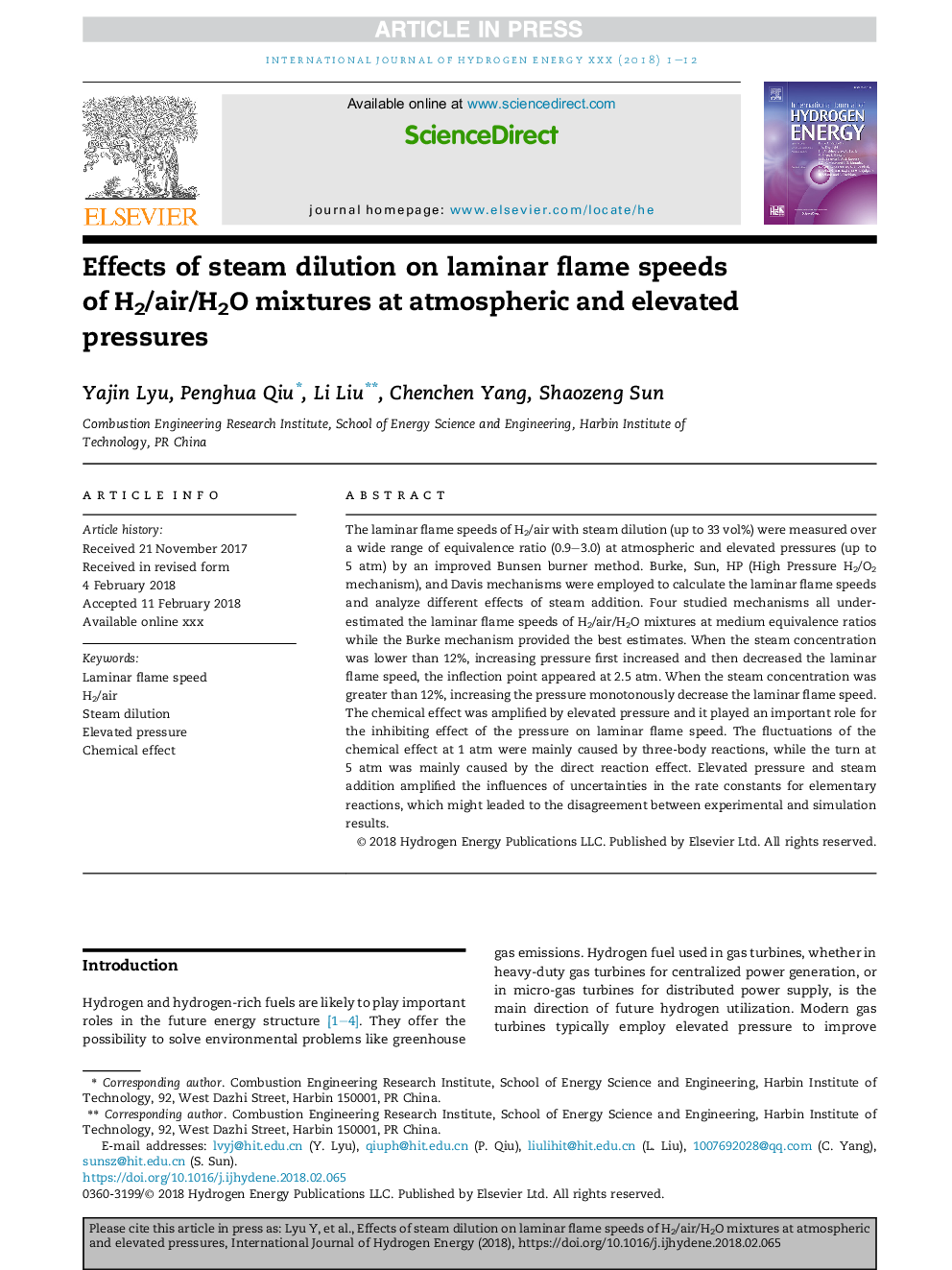| Article ID | Journal | Published Year | Pages | File Type |
|---|---|---|---|---|
| 7706624 | International Journal of Hydrogen Energy | 2018 | 12 Pages |
Abstract
The laminar flame speeds of H2/air with steam dilution (up to 33Â vol%) were measured over a wide range of equivalence ratio (0.9-3.0) at atmospheric and elevated pressures (up to 5Â atm) by an improved Bunsen burner method. Burke, Sun, HP (High Pressure H2/O2 mechanism), and Davis mechanisms were employed to calculate the laminar flame speeds and analyze different effects of steam addition. Four studied mechanisms all underestimated the laminar flame speeds of H2/air/H2O mixtures at medium equivalence ratios while the Burke mechanism provided the best estimates. When the steam concentration was lower than 12%, increasing pressure first increased and then decreased the laminar flame speed, the inflection point appeared at 2.5Â atm. When the steam concentration was greater than 12%, increasing the pressure monotonously decrease the laminar flame speed. The chemical effect was amplified by elevated pressure and it played an important role for the inhibiting effect of the pressure on laminar flame speed. The fluctuations of the chemical effect at 1Â atm were mainly caused by three-body reactions, while the turn at 5Â atm was mainly caused by the direct reaction effect. Elevated pressure and steam addition amplified the influences of uncertainties in the rate constants for elementary reactions, which might leaded to the disagreement between experimental and simulation results.
Related Topics
Physical Sciences and Engineering
Chemistry
Electrochemistry
Authors
Yajin Lyu, Penghua Qiu, Li Liu, Chenchen Yang, Shaozeng Sun,
